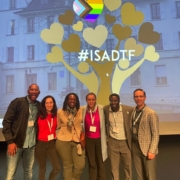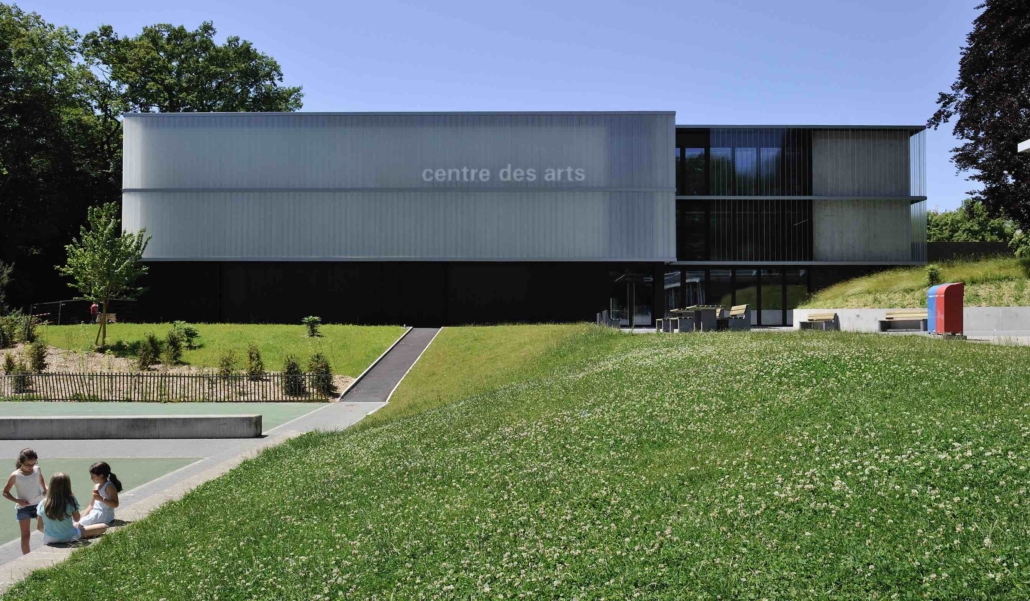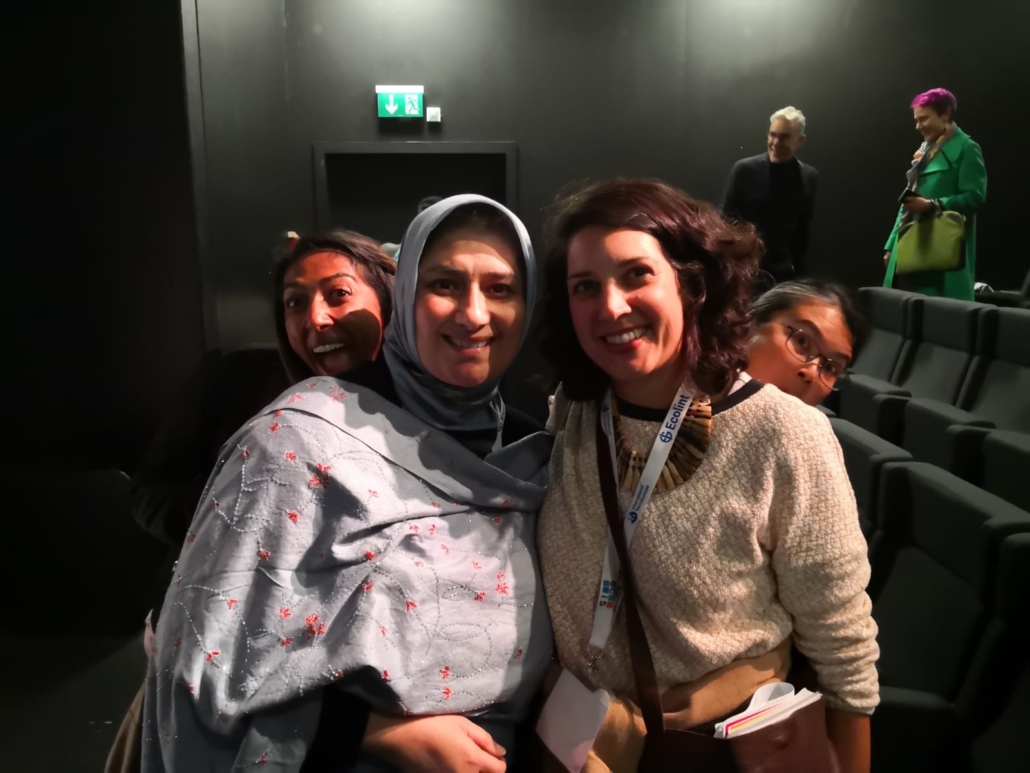Slow Is Smooth and Smooth is Fast: A Case for Taking Time to Do the Deep Work of DEIJ
Slow Is Smooth and Smooth is Fast: A Case for Taking Time to Do the Deep Work of DEIJ
Kyra Kellawan
Futures Lead at The British School of Barcelona & CoFounder, Kokoro Careers
A little over a month ago now, on a breezy Friday and gloriously sunny and warm Saturday in mid-October, the expansive, leafy campus of the Ecole Internationale de Genève was stirred up by the particular and palpable buzz of heightened conversation in its purpose-built arts centre.
The excitement and energy was due to an historic event hosted by Ecolint, the first of its kind, gathering a group of some 130 teachers, leaders, activists and partners in solidarity to learn, heal and make deep commitments to addressing inequities in international education. The International School Anti-Discrimination Taskforce (ISADTF) had been born.
The shared mission of this taskforce is “for international schools to be truly diverse, inclusive, safe, equitable and welcoming for all students, staff and families by promoting practices that eliminate racism, implicit bias and discrimination of all kinds.”[1] The organisations who jointly formed the task force, and are leading the charge are ECIS, Ecolint, The International Baccalaureate, and the Association of International Educators and Leaders of Color (AIELOC).
This mission, vast in its scope, gives many international school educators hope. Hope that it is possible to leave the age of discrimination behind and co-create more equitable structures in a sector that was inherently founded by, and built to sustain privilege. Hope that many more want to be able to see and address the particular needs of every child, staff member and auxiliary staff member. Hope that we can all stop, take a pause, and re-learn about ourselves and others, in order to remake the world in a way that feels aligned with our own humanity.
Here are some deeper reflections, 45 days on, that have allowed me to digest and interpret what we heard, learned, saw and felt, as well as its practical applications moving forward (in no particular order):
Allowing Difficulty In
Allowing for connection was the first step. Allowing whatever emotions arose to bubble up was necessary, and not neglecting to listen but also really HEAR the diverse perspectives in the room.
It’s important to feel our own reactions and inner turmoil before responding. There were without a doubt difficult conversations and things that were hard for some participants to share, others that were hard for participants to hear or confront about themselves. The main way to move forward after unearthing any uncomfortable conflicts as evidenced by conflict resolution manual The Negotiator’s Fieldbook (American Bar Association, 2016)[2] suggests that we can increase our capacity for forgiveness by allowing for the possibility that a counterpart who expresses a seemingly heartfelt apology is capable of personal growth. In other words, leading with a growth mindset for yourself and others enables you to see more than one reality, connect with perceived adversaries, and allows you to move past conflict to action.
Acknowledging that many who deeply supported the mission of the taskforce, or had been instrumental in its formation or execution, were simply unable to attend due to a lack of funding, resources or time “off” from their schools or work schedules. The cost of travel to, and accommodation and even basic subsistence in a city like Geneva did not go unnoticed. This resulted in a commitment being made to share as many materials from the two days online, including commitments and slide decks from the main sessions being made available on an ECIS microsite. Over time these resources will indeed grow. Plans must now be made to involve the global majority, in the southern hemisphere, incorporating events in other time zones and cities. Watch this space.
Dreaming by Design
Slowing right down is when things become interesting. Every single lesson in which you have a reflective moment, the clearer the material is. In a recent podcast episode, Tricia Friedman shared her approach to teaching IB Language & Literature, which was to ask for a “drop everything and read, or drop everything and doodle” moment each lesson. Her insight was that time allows students to relax, slow down and learn better.
This is a concept shared by both Tricia and Kathleen Naglee on the third episode of their “Unhinged Collaboration” podcast.[3] The episode, in which Sherri Spelic also contributes her thoughts on the exceedingly high expectations that educators place on themselves, discussed “Rest is Resistance”, a book by Tricia Hersey, who even has a hotline to promote the healing power of rest. She asserts that rest and reflective practices are a tonic for an exhausted world. A quote from the book that stuck:
“I am inspired by disruption in tenderness, I am inspired by imagination. I am inspired by grief, mourning and lament, I believe deeply in vulnerable, generative spaces for healing. I am inspired by rest, daydreaming and sleep.”[4]
“Radical Dreaming” was a concept mentioned by former AIELOC fellow Rama Ndiaye[5] many times during the ISADTF, and again, in Nunana Nyomi’s recent two-day Middle Leaders Course on Inspiring and Sustaining DEIJ Breakthroughs.[6]
In order to effect change, we must first pause and dream to design it: rarely do our breakthroughs come in the hustle of 11 hour days filled to the brim with meetings. One of the biggest takeaways for me from Nunana’s course was the visioning of a world that we as session participants actively wanted to contribute to, in which their students were safe, held in utmost care, and seen.
The biggest common denominator we all wrote down was that we would like more time with them, time to talk, discuss and connect.
We can, and must, be part of designing that change. And speaking of design, those of us familiar with Design Thinking principles and applying them in educational settings, á la Jim Ellis, would know what the first crucial step is of designing any new system or product: to empathise with the user (in this case, our students).
Fidelity to the design process of design is akin to the impactful deep work that we find so rare as we seek to methodically plot out real change. Fidelity to the DEI process is fidelity to your community’s voice, it’s committing to your principles, it’s allegiance with your colleagues and it’s the organisational consistency you create space for.
Resolving and Managing Conflicts
On some of the busiest days of the school year, many tensions will arise. Reading this, if you are currently working in a school, think about the last 11 -12 weeks. Have you received an email that made you sigh, groan, or swear under your breath? Have you snapped at, or been snapped at by a colleague? Have you lost your patience with a student? With a roomful of students?
One of our primary principles as educators, just as the hippocratic oath for medical professionals, is to do no harm (Cynthia Roberson reminded us of that in her exemplary session on the second morning of ISADTF)[7]. Can we be sure that we are not suffering ourselves first in the culture of our schools, and then, that we are not passing on that toxicity to the young people in our care, or to our colleagues working with us in the trenches?
As Sherri Spelic has said in many different ways in multiple blogs and podcasts, rest and regeneration actively reminds us that we are worthy of tenderness, worthy of taking care of ourselves, and as caregivers, educators’ own rest and reflection is critical. We have a prevalent hustle culture/grind culture and, as a reality, many of us are trying to just keep our heads above water amidst a raging storm. Add to that challenge the fact that not all of us are strong swimmers, don’t have the capacity to take on the swim, or perhaps were never taught how to swim in the first place.
Slow Down And Reflect
“Slow is smooth, and smooth is fast”. This adage, attributed to the Navy Seals, reminds us that the best pathway to success is to be measured, deliberate and take time to do fewer things well. This is a mindset adopted in Cal Newport’s book Deep Work: Rules for Focused Success in a Distracted World. [8] His first chapter is written in three parts, all of which can be applied to our example of ISADTF.
The first: Deep Work is Valuable. There is no doubt that the aims and objectives of the taskforce are immensely valuable. They have the capacity to impact hundreds of thousands of lives for the better in our international school ecosystem, as well as have lasting effects on the wider world in general as our students take their adaptive, growth mindsets into their next places of study, work and into their interpersonal relationships. The meaning attached to the work for so many of us creates a sense of urgency, as well as frustrations when things don’t seem to be moving along quickly enough. But even for the most hardened activists, we know there is a tipping point when any good innovation or “radical” dream takes hold of the collective consciousness. Making time to make space for all of those on different parts of the inclusion journey to learn with us is going to help us all swim together into a brighter future.
The second: Deep Work is Rare. We know this to be true by the number of minutes we devote to it in our daily lives. Unless time is consciously created and lines redrawn around our pressing priorities, the time to reflect in a typical school day is nonexistent. This gives inherent value to the ideas and solutions created consciously, without distraction. The power of an event such as the ISADTF was that for two days, participants could close their school email for a bit and step outside of the usual concerns of their own settings to connect more deeply with each other. Events like ISADTF are powerful tools for change, and we need more, more inclusive ones, held in more inclusive settings, and in multiple time zones with sliding attendance costs and/or fully funded places. (There is no but here. This work is never binary.)
Third: Deep Work is Meaningful. In the first days after the event, as there was a steady stream of online posts, tweets, and podcasts documenting reactions, commitments and questioning or holding to account of the organisations involved, I knew we would need to hold tight and see what came out of the shakedown. Large, established organisations tend to move at more glacial speeds than individuals do, and although of course as participants and DEI activists we want to see immediate changes, commitments and statements enacted, the real work does not begin *at* the event.
The real work begins with the reflection and time that each participant at that event has to assess their own practice, and then the will and the drive to drive those practices within their own settings. There is a decided trend for PD in DEI work to take a longer view, with most schools and leaders eschewing the “one and done” or “spray and pray” approach to professional learning. An excellent example of truly integrated visioning can be found in the approach of benchmark-setting schools showing excellence in embedding DEI practices into their everyday.
Some notable examples include: the curriculum review and training offered to staff at Mulgrave School, the staff recruitment practices at UNIS Hanoi, and the excellent, multi-faceted commitments made to self-study at Atlanta International School, who have clearly made long-term commitments to this work that go far beyond self-congratulatory statements or press releases into showing the receipts of their collective learning, team-building and toil.
I come back to the Navy Seals. The ship we are all on will run more smoothly, and is less in danger of capsizing, if we can take time to ensure that first: all our crewmates in DEI work (i.e. our entire school communities) can “swim”, are proficient in resolving differences of opinion, and have made the commitment to themselves to rest, learn and connect. Coming back to the premise of deep work, instead of conceiving DEI as yet another thing to tick off, is going to be key to its sustainability and interconnectedness despite our busy school lives.
This winter break, I remain buoyed and hopeful that in our learning communities, we will commit to stop, take a pause, and re-learn about ourselves and others, in order to include everyone on the journey.
A special thanks to ODIS (@decolonise_intl) whose courage at the ISADTF showed us all the power of speaking truth (even when to the biggest organisations) is something we can all do, with fierce grace.
Some “slow is smooth, smooth is fast” upcoming learning and training opportunities for deeper work:
Doline Ndorimana’s DEIJ Circle for International School Leaders
IDEIJ Continuum Learning PD Series (various facilitators)
The Longer Read: Becoming A Totally Inclusive School: A Guide for Teachers and School Leaders
The Short-Form, Wide-Ranging Podcast: The Unhinged Collaboration
FOOTNOTES/BIBLIOGRAPHY:
[2] Harvard.edu: Conflict Resolution
[4] NPR: Why rest is an act of resistance
[5] AIELOC: We just want to be teachers
[7] Cynthia Roberson presentation @ ISADTF
ABOUT THE AUTHOR
Kyra Kellawan is the Co-Founder of Kokoro Careers, a holistic career support service for people of all ages to find their ideal pathways that works in collaboration with industry experts.A third culture kid, she began her career in international education in 2006. She worked in international student recruitment before switching to to the “other side of the desk’ in future pathways counselling.
Her roles at the Lycée Français in New York, United World College Costa Rica, Aloha College and the British School of Barcelona have given her a unique dual perspective on international education with a DEIJ lens. She also consults for universities, schools and ed-tech organisations, and hosts a podcast on innovation in education, The PilotEd.






